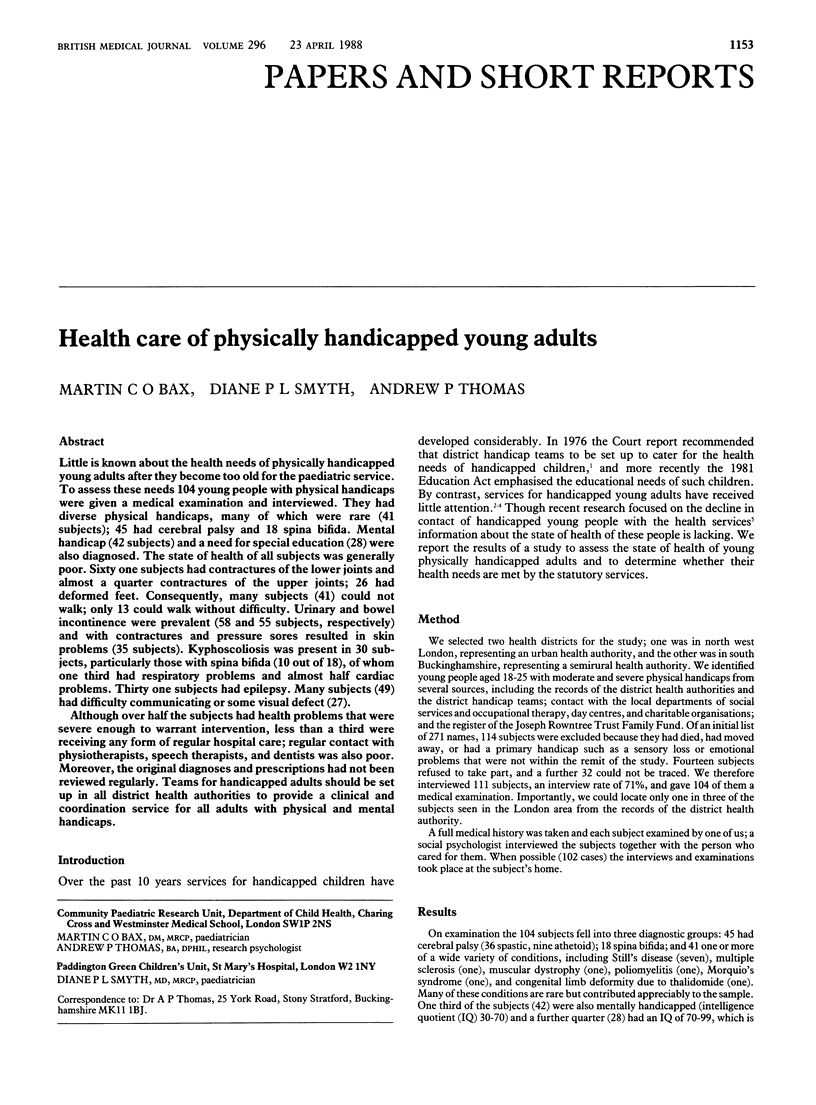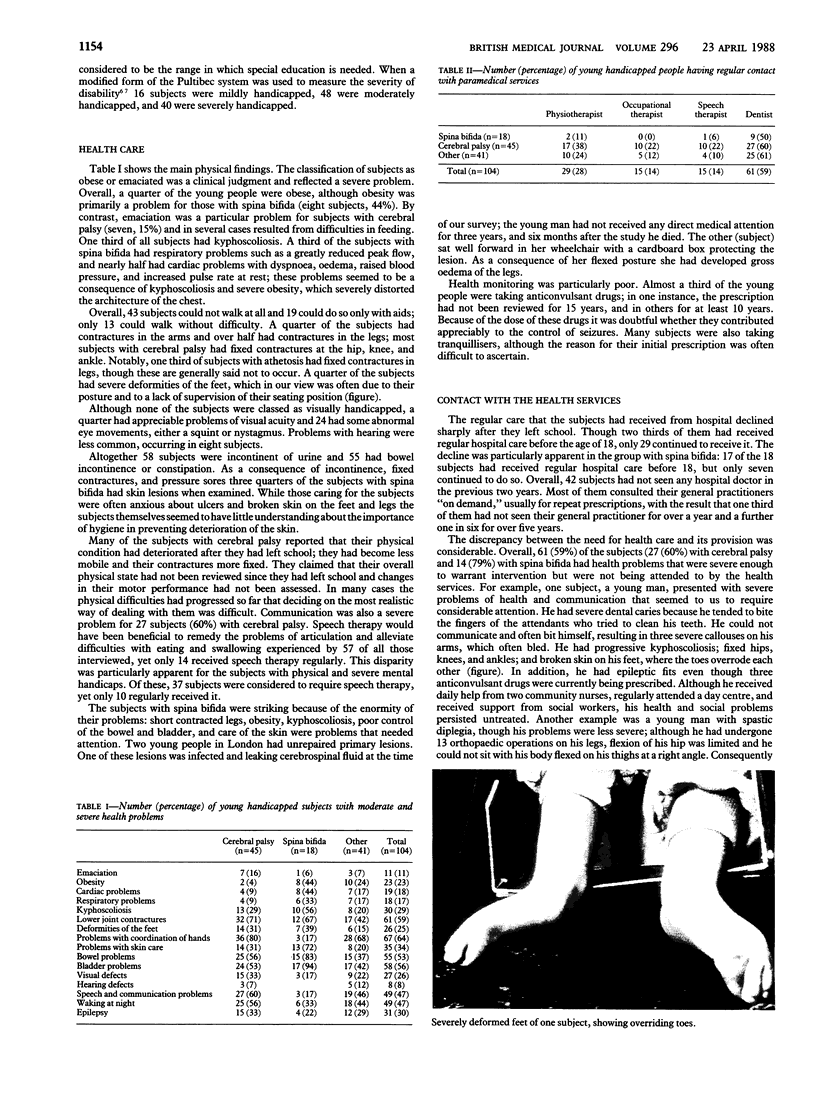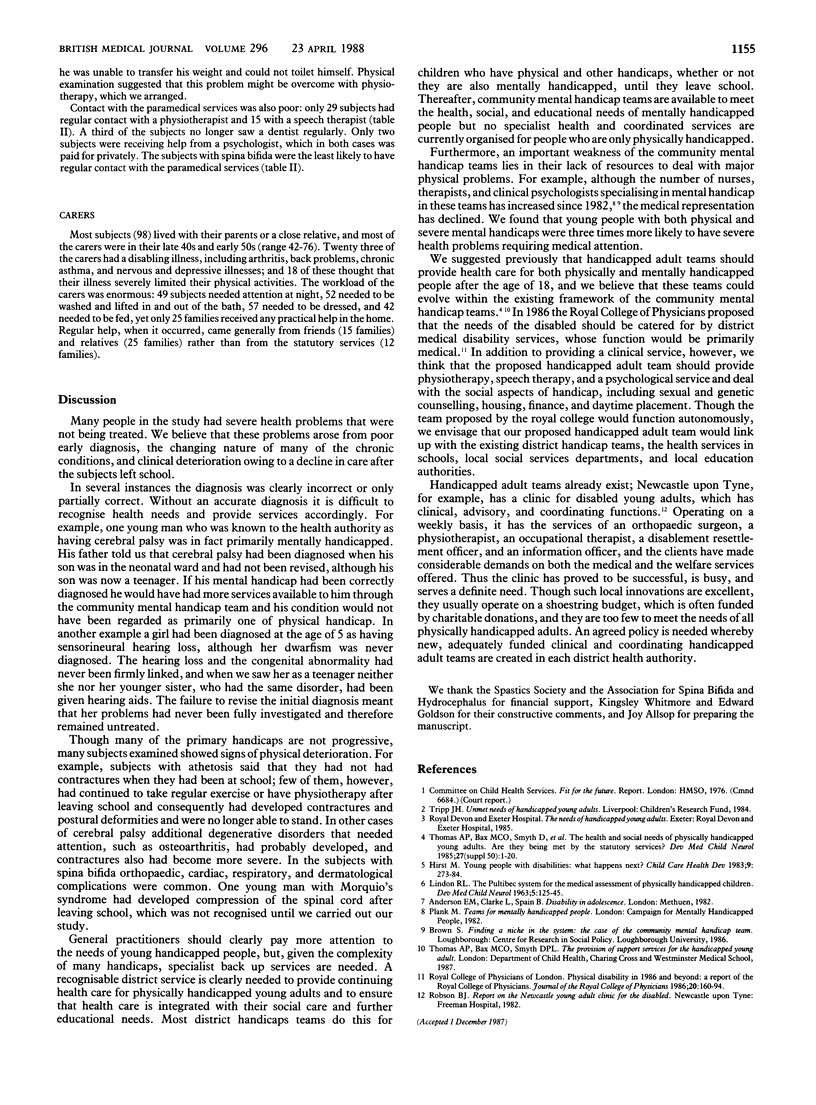Abstract
Little is known about the health needs of physically handicapped young adults after they become too old for the paediatric service. To assess these needs 104 young people with physical handicaps were given a medical examination and interviewed. They had diverse physical handicaps, many of which were rare (41 subjects); 45 had cerebral palsy and 18 spina bifida. Mental handicap (42 subjects) and a need for special education (28) were also diagnosed. The state of health of all subjects was generally poor. Sixty one subjects had contractures of the lower joints and almost a quarter contractures of the upper joints; 26 had deformed feet. Consequently, many subjects (41) could not walk; only 13 could walk without difficulty. Urinary and bowel incontinence were prevalent (58 and 55 subjects, respectively) and with contractures and pressure sores resulted in skin problems (35 subjects). Kyphoscoliosis was present in 30 subjects, particularly those with spina bifida (10 out of 18), of whom one third had respiratory problems and almost half cardiac problems. Thirty one subjects had epilepsy. Many subjects (49) had difficulty communicating or some visual defect (27).
Although over half the subjects had health problems that were severe enough to warrant intervention, less than a third were receiving any form of regular hospital care; regular contact with physiotherapists, speech therapists, and dentists was also poor. Moreover, the original diagnoses and prescriptions had not been reviewed regularly. Teams for handicapped adults should be set up in all district health authorities to provide a clinical and coordination service for all adults with physical and mental handicaps.
Full text
PDF


Images in this article
Selected References
These references are in PubMed. This may not be the complete list of references from this article.
- Hirst M. A. Young people with disabilities: what happens after 16? Child Care Health Dev. 1983 Sep-Oct;9(5):273–284. doi: 10.1111/j.1365-2214.1983.tb00325.x. [DOI] [PubMed] [Google Scholar]
- LINDON R. L. The Pultibec system for the medical assessment of handicapped children. Dev Med Child Neurol. 1963 Apr;5:125–145. doi: 10.1111/j.1469-8749.1963.tb05011.x. [DOI] [PubMed] [Google Scholar]
- Thomas A., Bax M., Coombes K., Goldson E., Smyth D., Whitmore K. The health and social needs of physically handicapped young adults: are they being met by the statutory services? Dev Med Child Neurol Suppl. 1985 Aug;50:1–20. [PubMed] [Google Scholar]



